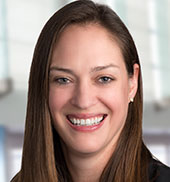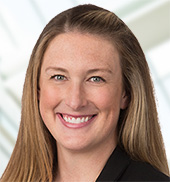On October 31, the U.S. Department of Education promulgated its new “gainful employment” or “GE” regulations. As we discussed in a prior post, the new rules apply to all programs offered by for-profit, proprietary institutions, as well as to most non-degree programs offered by public and private non-profit institutions (hereafter referred to as “GE programs”).
The Department argues that the regulations are needed, and thus designed, to ensure that GE programs provide a pathway to meaningful employment without saddling graduates with excessive debt. Accordingly, while the GE regulatory framework includes reporting, disclosure, and certification requirements, it most prominently features two metrics, each ultimately intended to assess whether a program offers a reasonable return on investment: (1) the Annual Earnings Rate, and (2) the Discretionary Income Rate. The formula associated with each metric is as follows:
- Annual Earnings Rate = Annual Loan Payment / Annual Earnings
Discretionary Income Rate = Annual Loan Payment / Discretionary Income
Generally speaking, these two rates, collectively referred to as the debt-to-earnings or “D/E rates,” measure graduate debt as a percentage of post-graduation earnings. For each award year and for each eligible GE program offered by an institution, the Department will calculate the D/E rates using information reported by the institution, in accordance with the procedures set out in 34 C.F.R. §§ 668.404 through 668.406. Programs that consistently produce rates below the requisite thresholds face sanctions, and ultimately may lose access to federal financial aid funds.
Although the regulations will not take effect until July 1, 2015, and lobbying, elections, and court challenges likely stand between the effective date and the first round of possible sanctions (Spring 2016), many institutions already are attempting to assess whether their GE programs will produce passing rates.
Efforts of this sort are worthwhile, particularly if a significant percentage of an institution’s program portfolio or enrollment involves GE programs. After all, the sooner an institution is aware that it has an issue, the sooner it can begin revising a problem program or creating and seeking approval of a new program to take its place. In addition, gathering data for the purpose of projecting rates likely will facilitate an institution’s accompanying efforts to satisfy reporting obligations under the new regulations (institutions are required to provide to the Department a great deal of data for each GE program by July 31, 2015).
Of course, whether an institution is able to undertake a projection exercise will turn largely on whether it can allocate the time and resources necessary to study the new regulations and determine how the calculations should be carried out. We deeply appreciate that for many schools, both time and resources are in short supply. In an effort to lend a helping hand, over the next few weeks we’ll offer some step-by-step resources for projecting D/E rates. Specifically, we’ve broken the projection process into nine steps, which we’ll present in five parts.
Before we begin, we’re compelled to offer one word of caution. It’s not possible to project with absolute certainty whether a GE program will produce satisfactory rates because the public does not have access to some of the data the Department will use when making its determination for each program. Under the new rules, the annual earnings information for graduates, which informs the denominator in each of the D/E rates, will be obtained directly from the Social Security Administration. Thus, while the process we will be setting out is sound, it is not exact. This having been said, with a few educated assumptions, the steps set forth in our series can help institutions project which programs will pass easily, which will be close, and which likely will fail.
Step One: Determine the scope of your institution
When the Department calculates D/E rates, it does so for each GE program offered within a single institution. Accordingly, an accurate understanding of your institution, as viewed by the Department, is foundational to your rate projections, and worthy of attention.
When an institution first is approved to participate in the federal financial aid programs, the Department assigns it a unique six-digit Office of Postsecondary Education Identification number (OPE ID). This OPE ID includes the institution’s main campus and any additional locations the Department associates with that main campus. From the Department’s perspective, the “institution” and the OPE ID are one in the same.
For many institutions, all locations — and all programs — fall within a single OPE ID. However, on occasion, and for various reasons, a single “institution” may include more than one OPE ID. For example, if a large university merged with an existing local college, the college ostensibly could retain its own OPE ID after the transaction. In such an instance, the Department would continue to view the university and the college as distinct “institutions,” even if the public viewed them as a unified postsecondary entity. When calculating D/E rates, the Department would calculate separate rates for the university’s programs and the college’s programs, respectively.
It also can be the case that institutions considered completely unrelated by the public are, in fact, part of a single OPE ID. For example, assume the same large university acquired a small, well-known college of education located in a different state, and all agreed that the college would retain its name and much of its autonomy. If, as part of the transaction, the college’s own OPE ID was dissolved and it was joined to the OPE ID of the large university, the Department would deem them a single institution, without regard to whether the public was aware of their affiliation.
With these concepts in mind, the first step in calculating your D/E rates is to identify your OPE ID, and to ensure that you know the universe of locations (e.g., main, branch, satellite, extension, etc.) and programs included within the scope of the OPE ID.
Step Two: Identify your “GE Programs”
Once you have confirmed the scope of your institution (i.e., your OPE ID), you’ll need to identify each “GE program” for which you are projecting D/E rates. Once again, this step, like the previous one, can be deceptively complex, as the Department’s view of a “program” may differ from your own. When calculating rates, the Department defines a “GE program” as a Title IV-eligible program identified by a combination of (1) OPE ID, (2) six-digit CIP code, and (3) credential level. 34 C.F.R. 668.402 (Gainful employment program (GE program)).
For purposes of this analysis, we are assuming that you are calculating GE accountability rates for a single OPE ID. Thus, from a regulatory perspective, the Department views all of your programs as being part of, and offered by, a single institution. As a consequence, the only two factors distinguishing one GE program from another within your OPE ID are the credential level and the six-digit CIP code.
The Department identifies the following eight credential levels for purposes of the GE analysis:
(1) undergraduate certificate or diploma
(2) associate degree
(3) bachelor’s degree
(4) post baccalaureate certificate
(5) graduate certificate (including a postgraduate certificate)
(6) master’s degree
(7) doctoral degree
(8) first professional degree (e.g., MD, DDS, JD)
Source: 34 C.F.R. 668.402 (Credential level)
If your institution offers more than one program at a single credential level (e.g., multiple graduate certificate programs), you will need to examine the six-digit CIP Code for each program within the credential level.
If each program you offer within a given credential level has a unique CIP Code, then the Department, like the institution, will view each program as distinct. However, if within a single credential level your institution offers two or more programs with the same CIP Code, when calculating your GE accountability rates, the programs with identical CIP codes will need to be consolidated.
Indeed, neither the name of the program, nor the location where it is offered, is relevant to the Department. Thus, an institution could be required to combine its two graduate certificate programs even if they have separate names and they are offered at completely different locations. Again, if they are offered within the same OPE ID, and share the same credential level and six-digit CIP Code, the Department considers them to be a single GE program and requires that they be consolidated when calculating D/E rates.
Our next post will resume with Step Three: Determine which GE students to include in your cohort.
Looking for more information on the new Gainful Employment rules?
For a complete overview of the new gainful employment rules, including reporting, certification, and disclosure requirements, we invite you to listen in to our free gainful employment webinar series. Our next webinar, “Projecting Debt-to-Earnings Rates,” will take place Tuesday, December 9.
Aaron Lacey is a partner in Thompson Coburn’s Higher Education practice, and editorial director of REGucation. You can find Aaron on Twitter (@HigherEdCounsel) and LinkedIn, and reach him at (314) 552-6405 or alacey@thompsoncoburn.com.


















